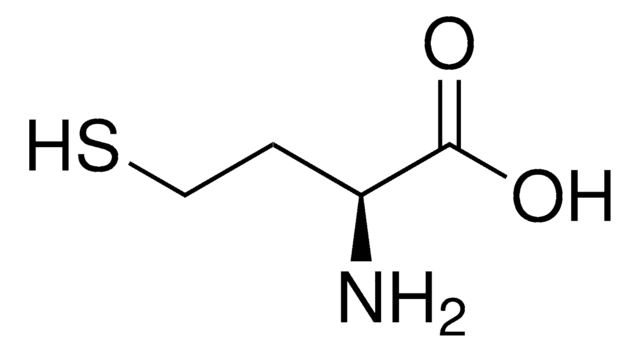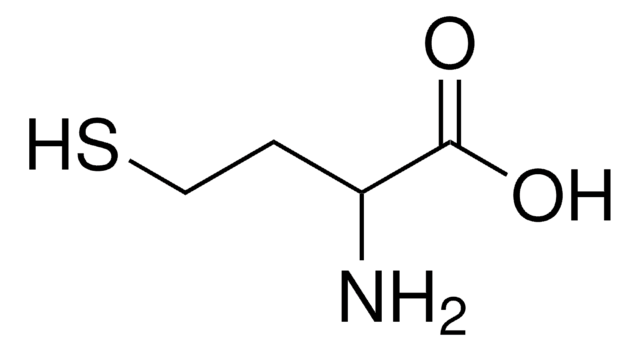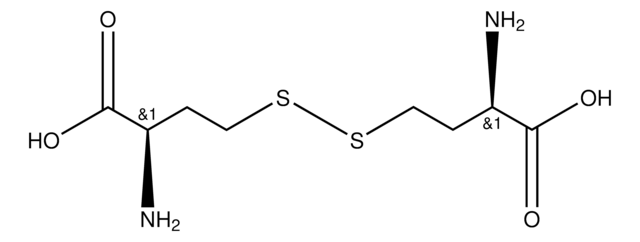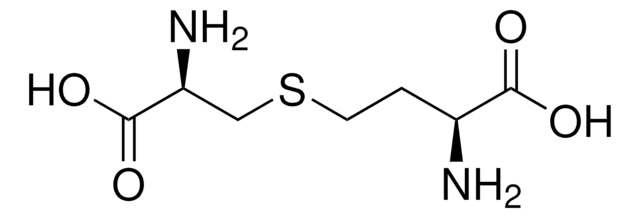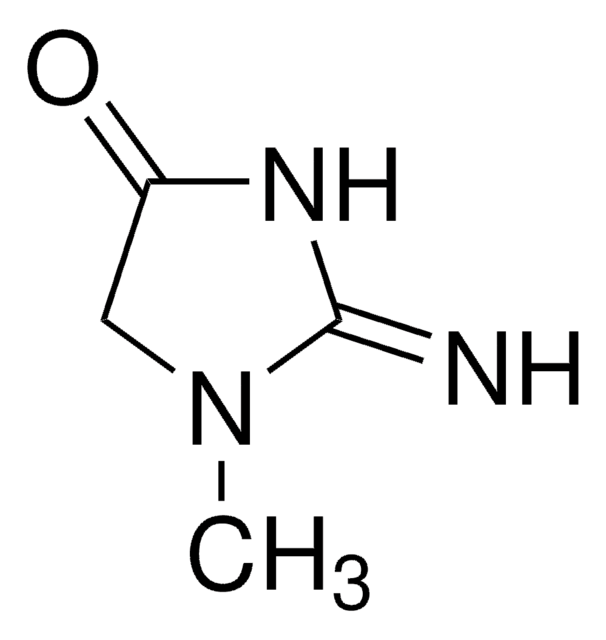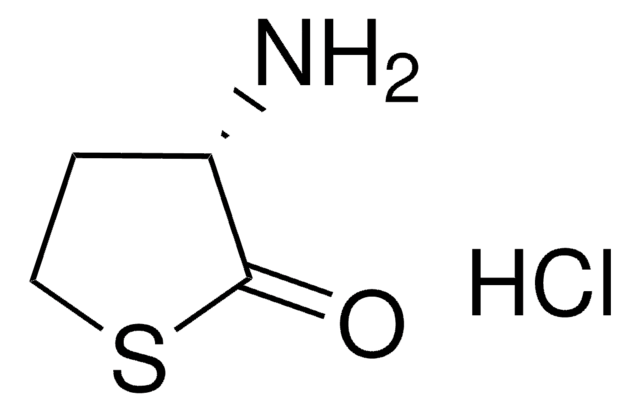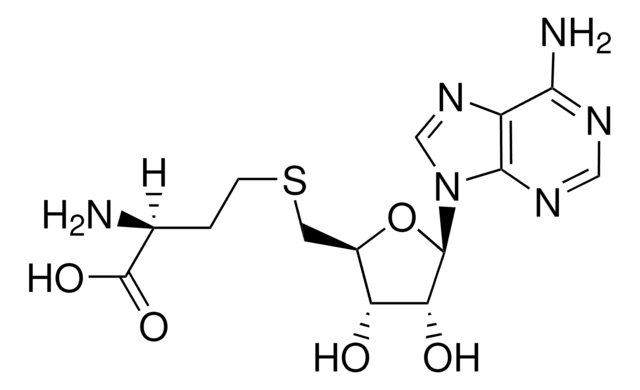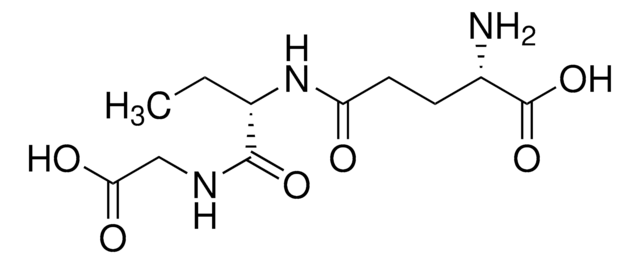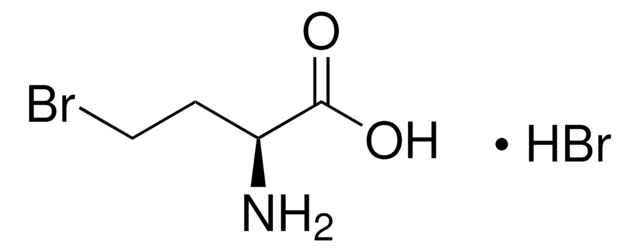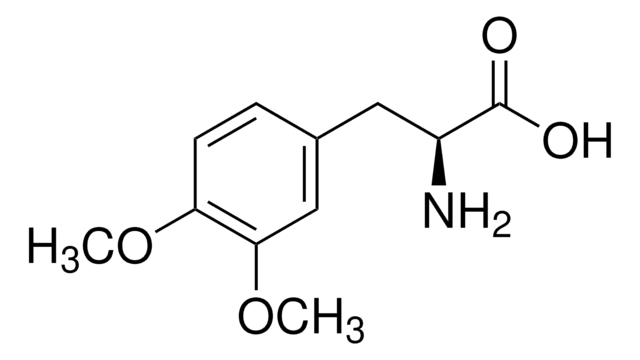H6010
L-Homocystine
≥98% (HPLC)
Synonym(s):
L-4,4′-Dithiobis(2-aminobutanoic acid)
About This Item
Recommended Products
Product Name
L-Homocystine, ≥98% (HPLC)
Assay
≥98% (HPLC)
form
powder
color
white to off-white
mp
281-284 °C (dec.) (lit.)
application(s)
cell analysis
peptide synthesis
SMILES string
N[C@@H](CCSSCC[C@H](N)C(O)=O)C(O)=O
InChI
1S/C8H16N2O4S2/c9-5(7(11)12)1-3-15-16-4-2-6(10)8(13)14/h5-6H,1-4,9-10H2,(H,11,12)(H,13,14)/t5-,6-/m0/s1
InChI key
ZTVZLYBCZNMWCF-WDSKDSINSA-N
Looking for similar products? Visit Product Comparison Guide
Biochem/physiol Actions
Storage Class Code
11 - Combustible Solids
WGK
WGK 3
Flash Point(F)
Not applicable
Flash Point(C)
Not applicable
Personal Protective Equipment
Regulatory Listings
Regulatory Listings are mainly provided for chemical products. Only limited information can be provided here for non-chemical products. No entry means none of the components are listed. It is the user’s obligation to ensure the safe and legal use of the product.
JAN Code
H6010-PM:
H6010-100MG:
H6010-1G:
H6010-BULK:
H6010-500MG:
H6010-VAR:
H6010-25MG:
Choose from one of the most recent versions:
Already Own This Product?
Find documentation for the products that you have recently purchased in the Document Library.
Customers Also Viewed
Articles
Inborn errors of metabolism are caused by changes in specific enzymatic reactions and hundreds of different such alterations, which affect about 1 of every 5000 newborns, have been characterized.
Our team of scientists has experience in all areas of research including Life Science, Material Science, Chemical Synthesis, Chromatography, Analytical and many others.
Contact Technical Service